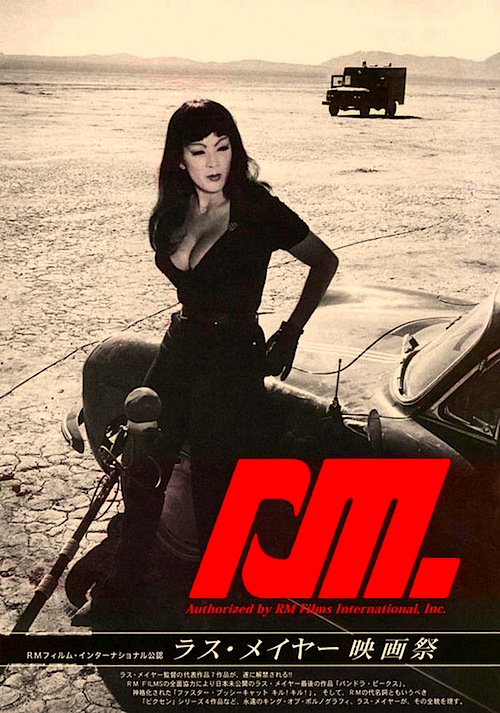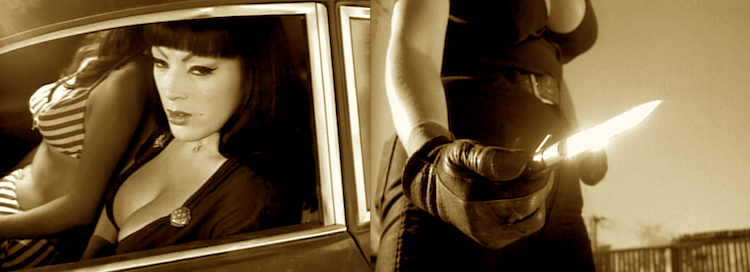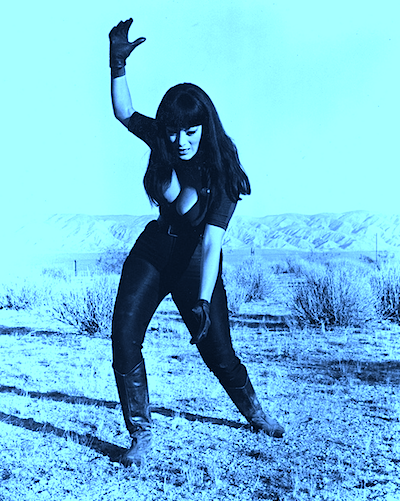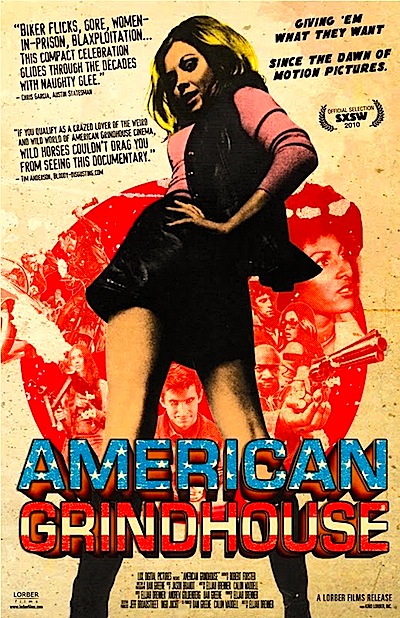
By Jason Apuzzo. The great Tura Satana passed away this past Friday. Our condolences to her family, many friends and fans. She will be greatly missed. (Read the NY Times obit here, and classic film blogger Kimberly Lindbergs’ fine 2007 piece “Tura Satana: An American Icon”).
Govindini and I met Tura about two years ago at an event. I’m a great fan of Russ Meyer’s films, and of Faster, Pussycat! Kill! Kill! in particular, so I approached Tura to express my enthusiasm for her work. What I expected to be a brief exchange turned into an hour-long conversation, and I soon found myself snapping pictures of Tura with Govindini (they got on like a house on fire) and with the other Pussycat girls Haji and Lori Williams, and having a fantastic time. I talked with Tura about her incredible life – her hard upbringing, her Japanese family’s stint in the Manzanar internment camp, her romance with Elvis. In particular I remember her telling me how some of Elvis’ signature dance moves were actually lifted from her burlesque act.
She also talked a lot about her love of America, and the opportunities it had given her. Tura was intensely patriotic, and was not shy about expressing it. It was amazing to see that coming from someone who’d had such a difficult upbringing – a young life filled with violence, betrayal and a lot of pain. (More horror stories, more abuse and hard luck than I care to recount here.) Nonetheless, the impression I had of Tura that day was of a survivor with a very tough exterior – who had nonetheless preserved a tender heart, and a robust love of life.
For those of you who may not be familiar with her, Tura delivered what is in my opinion – and in the opinion of many others – the iconic performance of cult cinema, playing Varla in Russ Meyer’s Faster, Pussycat! Kill! Kill!. And for some bizarre reason, it’s the only really large role that Tura was ever given. This is a bit like not wanting the young Wilt Chamberlain on your basketball team. I’ve heard many explanations for her disappearance from the film scene after Faster, Pussycat – but none of them has ever made any sense to me. She seems so impossible to ignore.

The biggest tragedy of Tura’s career, one which Russ Meyer himself acknowledged, was that he and Tura didn’t continue to make films together. The mind reels to think of what those two could have accomplished, had they kept that partnership going.
In the very least, however, we have Faster, Pussycat! Kill! Kill!.
And on that subject, 1965’s Faster, Pussycat is easily the greatest cult film ever made – and the competition is not even close. Certainly one of the major reasons for the film’s success is Tura’s performance as Varla – and how does one describe her in that film? She’s like a force of nature – a category 5 hurricane – something primal, unstoppable, a torrent of violence, lust, desire, and mocking humor rolled into one. Imagine a Japanese Venus of Willendorf with bangs, dressed like Marlon Brando in The Wild One, puffing on a cheroot, bellowing quips into the desert air that seem like something out of a long-forgotten Bogart film. And then come the karate chops, the kicks and knives! Not exactly Bruce Lee stuff, but deadly nonetheless.

The image of Tura Satana (has there ever been a name like that?) – dressed in black, leaning against her car in the high Mojave desert – has become one of those iconic images that end up on the dorm room walls of young guys in college … and increasingly young girls, as well. It’s a great American image, one of cool independence, not unlike the image that Steve McQueen or Clint Eastwood projected during that same period. It’s an image of what we all want to be, or should want to be – tough, self-reliant, skeptical, at home in the wild.
We don’t do ‘cool’ here in America very well, any more. I’m told by experts that we have a President who’s ‘cool,’ for example, but I don’t quite believe it. Cool people don’t get everything in life handed to them, and nobody handed anything to Tura Satana – except maybe Russ Meyer, who gave her that one role of a lifetime.
Since we still have that film, Tura will still be with us, reminding us of how cool all of us can be.
Somewhere in the afterlife, God and the Devil are probably fighting over credit for creating Tura Satana. God will win that one.
Footnote: Tura was a fan of Libertas Contributor Steve Greaves‘ music. Plus: I’ve embedded below the first 6 minutes of Russ Meyer’s Faster, Pussycat! Kill! Kill! There’s never been anything quite like it.
Posted on February 9th, 2011 at 11:49am.
